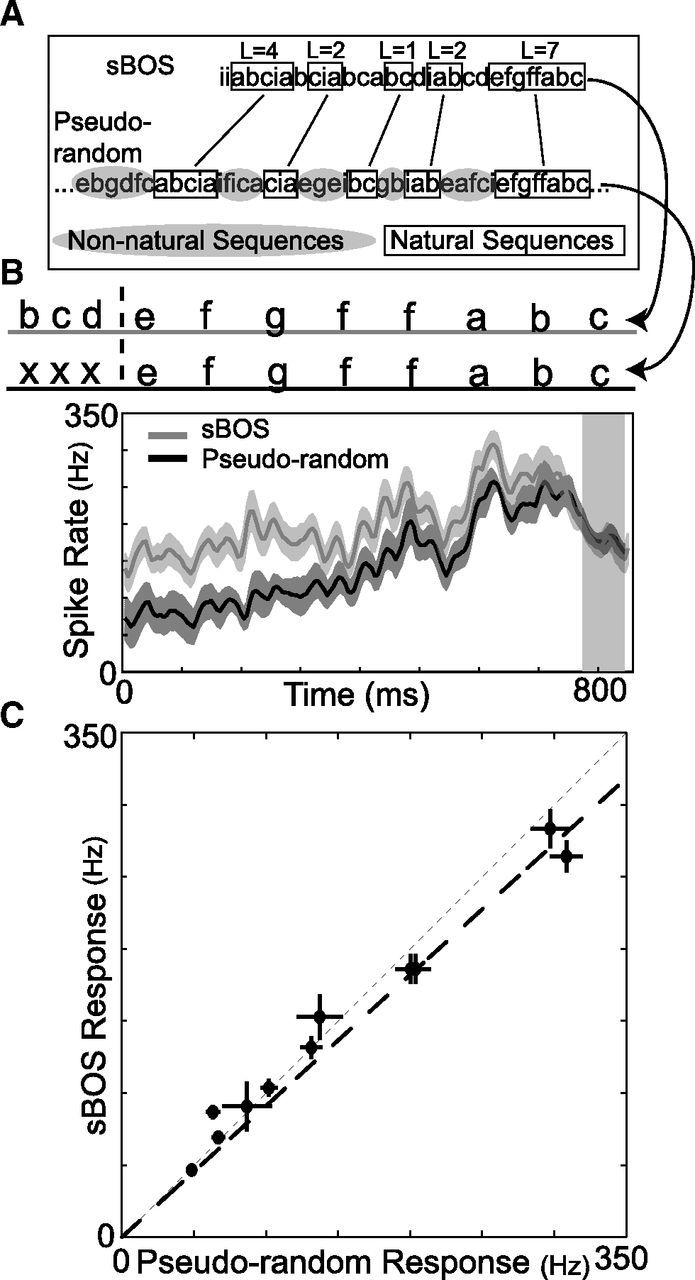Figure 3.

Pseudorandom sequences are effective auditory stimuli. A, Illustrative pseudorandom stimulus sequence. Pseudorandom stimuli were designed to contain naturally occurring sequences (examples in black boxes) of various lengths randomly interleaved with non-naturally occurring sequences (examples in gray ovals). Within the pseudorandom stimuli, we define a natural sequence of length L (e.g., SL = efgffab, L = 7) preceding a target syllable (e.g., s0 = c) as a string of L syllables sequenced as in BOS, preceded by a syllable that does not naturally occur before the first syllable [i.e., P(x|e) = 0]. A sample BOS segment is shown above and lines connect naturally occurring sequences that were present in both sBOS and pseudorandom stimuli. B, Example of auditory responses at one site to the same naturally occurring sequence (“efgffabc”) that occurred in both sBOS (gray) and pseudorandom (black) stimuli (mean ± SE). In this case, the response to the last syllable (shaded region) was the same regardless of which stimulus it occurred in. C, Average magnitude of auditory responses to a syllable when preceded by the same sequence of 7 syllables in sBOS and pseudorandom stimuli. Each datum corresponds to one recording site and shows the mean ± SE of the responses to all syllables. Thin gray dashed line is unity. Thick black line is from regression. Responses were not different between stimuli (p > 0.5, Wilcoxon signed-rank test) and exhibited a strong linear relationship (r = 0.93, p ≤ 10−8).
